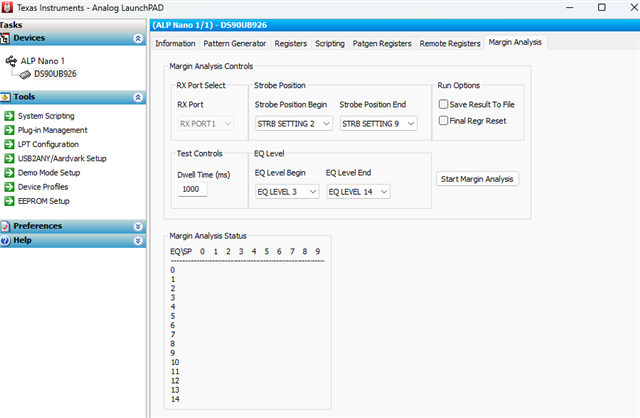Other Parts Discussed in Thread: DS25BR100, ALP
Tool/software:
Hello TI Support Team,
I am a hardware design engineer at LIG Nex1, currently working on a system using the FPD-Link III devices: DS90UB925QSQE/NOPB (serializer) and DS90UB926QSQE/NOPB (deserializer).
We have tested our system using various cables and observed the following issues when no TX buffer was used between the serializer and the cable:
1. The system's performance varied depending on the cable type and length.
2. When using cables longer than approximately 3 meters, the deserializer frequently lost lock.
I am aware that FPD-Link III devices are typically designed for point-to-point connections, and that external LVDS drivers or redrivers are generally not recommended. However, due to the lock instability over longer cables, I would like to ask the following:
---
Questions:
- Can a TX buffer (such as an LVDS redriver or repeater) be safely used between the DS90UB925QSQE and the cable without violating signal integrity or protocol timing?
- If so, which TI-recommended devices (e.g., DS25BR100 or others) are appropriate for use with FPD-Link III, especially at cable lengths over 3m?
- If using a TX buffer is not recommended or supported, what is the best practice to ensure reliable link lock over long cable distances (3m+), especially in noisy environments?
- Are there any official application notes or design guides specifically for FPD-Link III systems regarding signal extension or cable driver strategies?
- The datasheet mentions that AC-coupled STP cables can support transmission up to 10 meters — are there any specific design or layout considerations we should follow when building such cables?
We would greatly appreciate your guidance and any technical documentation you can recommend for robust long-distance FPD-Link III transmission.
Thank you in advance for your support.
Best regards,
Kiyoun Ryu
Hardware Design Engineer
LIG Nex1



